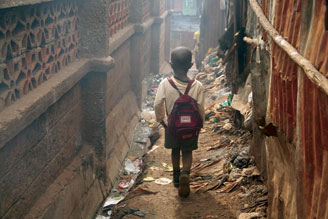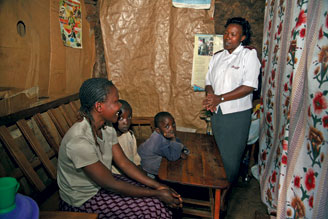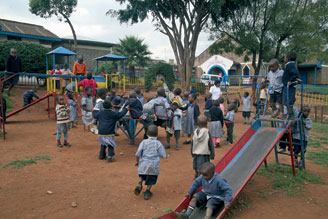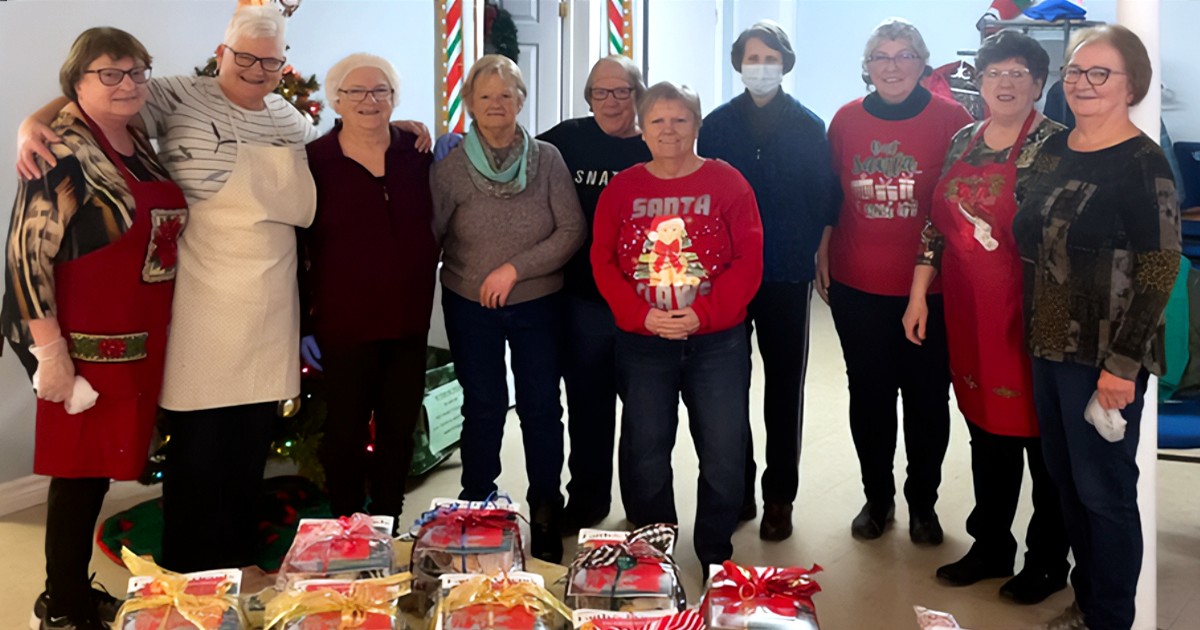 Home to more than a million people, Kenya's Kibera is one of the largest slum communities in the world. Located on the outskirts of Nairobi, Kenya's capital, the Kibera slum is densely populated (2.5 square kilometres) with the vast majority of its residents living in abject poverty. It's estimated that nearly 20 percent of the community is infected with HIV/AIDS, and that half of the population is younger than 15. One of these children is Graham, five, who lives with his mother and younger brother in a one-room, one-storey shelter.
Home to more than a million people, Kenya's Kibera is one of the largest slum communities in the world. Located on the outskirts of Nairobi, Kenya's capital, the Kibera slum is densely populated (2.5 square kilometres) with the vast majority of its residents living in abject poverty. It's estimated that nearly 20 percent of the community is infected with HIV/AIDS, and that half of the population is younger than 15. One of these children is Graham, five, who lives with his mother and younger brother in a one-room, one-storey shelter.
Kibera has thousands of these shelters built from clay, discarded wood, cardboard and corrugated iron. When it rains, the water often leaks through the roof and walls. Despite these horrible conditions, the people living in these shelters, such as Graham and his family, still have to pay rent to landowners. There is no electricity, drinking water or lavatories. With no healthy way to dispose of human waste, small plastic bags are used, tied up and then thrown away as far as possible. The small alleys between the shelters are covered with these “flying toilets” and other waste. The smell is unbearable.
Graham's mother Margareth, 30, is the sole caregiver for the family, as her husband died of AIDS in 2003. When Graham was born, Margareth tested positive for HIV. Her two sons are not infected, and Margareth hopes that her medication will keep her alive long enough to see her daughters-in-law and grandchildren.
 The Salvation Army operates a church and day-care centre in Kibera. Eighty children—the majority of them AIDS orphans—attend kindergarten classes. Each weekday, Graham walks with his little rucksack from home to school and back. His future is uncertain, as he, too, may become an orphan like many of his friends at school.
The Salvation Army operates a church and day-care centre in Kibera. Eighty children—the majority of them AIDS orphans—attend kindergarten classes. Each weekday, Graham walks with his little rucksack from home to school and back. His future is uncertain, as he, too, may become an orphan like many of his friends at school.
The Salvation Army compound contrasts with the filth of the surrounding community. When people walk through the yellow, red and blue gate, they step into a different world: everything is clean, quiet and peaceful. In 2007, the kindergarten classrooms were renovated and a play garden was established in the centre of the compound. In addition to the classrooms, the Army has a corps building, a humble residence for the officers and a vocational training centre where women can learn how to make clothes.
Margareth and most Kibera residents work in and around their homes. They try to earn a living with everything and nothing. In small shops and stalls, second-hand clothes, utensils and food are sold. During the day, the slum streets bustle with activity. At night, the streets are dark, dangerous and silent. In the late hours it is not wise to leave the shelters, because a human life is not worth much in Kibera.
 In her poor shelter, Margareth explains that her medication has to be taken with meals, but that she has not enough money to buy food. “I earn a little bit of money washing clothes for other people, but that is not enough to support my family. I'm grateful that The Salvation Army pays Graham's school fees and provides him with a meal at school. That means fewer worries for me, but I still have to care for his little brother. I need new mattresses because the ones we use now are wet and dirty because of leakage. There are times when I can't see the light at the end of the tunnel, but despite it all, I know that God cares for us.”
In her poor shelter, Margareth explains that her medication has to be taken with meals, but that she has not enough money to buy food. “I earn a little bit of money washing clothes for other people, but that is not enough to support my family. I'm grateful that The Salvation Army pays Graham's school fees and provides him with a meal at school. That means fewer worries for me, but I still have to care for his little brother. I need new mattresses because the ones we use now are wet and dirty because of leakage. There are times when I can't see the light at the end of the tunnel, but despite it all, I know that God cares for us.”
The Salvation Army does its best to help the people of Kibera, but this ministry relies on the financial support of donors in other countries. Captains David and Grace Musyoli, corps officers, remain committed to offering hope and a future to children like Graham. “Our faith in God and his Son, Jesus Christ, is the reason why we want to help the people in Kibera,” says Captain Grace Musyoli. “Our faith gives hope, despite the inhumane and almost hopeless situation in which people have to live. We testify about this hope in our church meetings on Sunday, but during the week we want to show it in a practical way.”
Top: A child walks through the Kibera slum; middle: Cpt Grace Musyoli visits with Graham and his family in their home; bottom: children play at the Salvation Army day-care centre in Kibera
Comfort and Joy
Salvationists in Garnish, N.L., show compassion at Christmas through bereavement packages.
by Abbigail Oliver FeaturesFor many who have lost a loved one, the holidays can be particularly difficult and lonely. To help them know they’re not alone, a dedicated group of women from The Salvation Army in Garnish, N.L., deliver handmade bereavement packages to those who are grieving. The initiative has been running for more than a decade and emerged after the ministry
Read More
Letters from Bangladesh: Day by Day in Dhaka
Six months into our overseas ministries is just the beginning of what God has in store.
by Jahred R. Warkentin FeaturesCanadian Salvationists Jahred and Jessica Warkentin continue to share their experiences and prayer requests as they serve in ministry with The Salvation Army in Bangladesh.
Living History: Death on the Ice
A humble Bible is mute testament to a disaster in Newfoundland and Labrador’s recent past.
FeaturesLiving History is an ongoing series showcasing just a small assortment of the more than 350,000 items housed at The Salvation Army Heritage Centre in Toronto. This month, we highlight Salvationist Cecil Mouland’s Bible, like him, a survivor of the SS Newfoundland. In early March 1914, eight young men from the northeast Newfoundland and Labrador
Read More









Leave a Comment